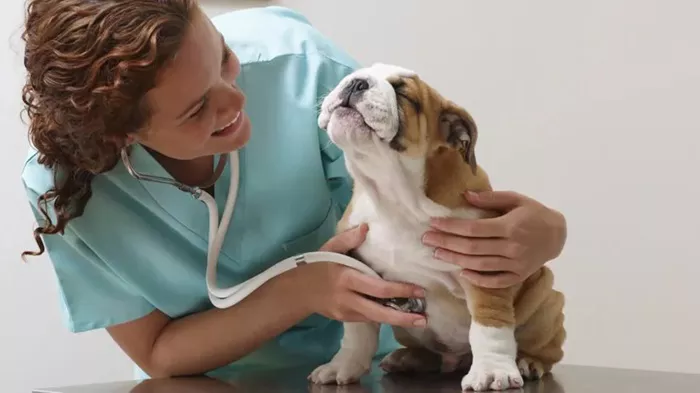Choosing the best pet insurance involves understanding the breadth of coverage it provides. Pet insurance can be a lifesaver in managing the high costs associated with pet care, but policies can vary significantly. This article explores the various aspects of pet insurance coverage, including medical emergencies, routine and preventive care, chronic and hereditary conditions, exclusions and limits, deductibles and reimbursements, additional benefits, and customer support.
Coverage for Medical Emergencies
Pet insurance is particularly valuable for covering major medical emergencies, which can arise unexpectedly. Here’s what you can typically expect:
Accidents: Coverage includes treatment for injuries resulting from accidents, such as broken bones, lacerations, or ingestion of foreign objects.
Injuries: This encompasses a broad range of treatments for injuries sustained through various means, whether a pet gets into a fight or has an unfortunate run-in with a car.
Specific Illnesses: Many policies cover treatments for serious illnesses, including cancer. This often includes surgeries, chemotherapy, and other necessary interventions.
Cancer Treatment
Cancer treatment for pets can be extraordinarily expensive. The best pet insurance plans cover diagnostic tests, surgeries, medications, and chemotherapy. Some advanced plans also cover newer treatments like immunotherapy.
Routine and Preventive Care
Preventive care is essential for maintaining a pet’s health and catching potential issues early. While not all pet insurance plans include routine care, many offer it as an add-on. Coverage typically includes:
Vaccinations: Routine vaccinations to protect against diseases like rabies, distemper, and parvovirus.
Dental Cleanings: Regular dental cleanings to prevent periodontal disease.
Regular Check-ups: Annual or bi-annual check-ups to monitor the pet’s overall health and catch any issues early.
Flea and Tick Prevention: Some plans cover preventative treatments for fleas, ticks, and heartworms.
see also: How Long Do Renters Insurance Claims Take
Chronic and Hereditary Conditions
Pets, like humans, can suffer from chronic illnesses and hereditary conditions. The best pet insurance plans provide coverage for:
Chronic Conditions: Conditions such as diabetes, arthritis, and thyroid disorders require ongoing treatment and medication. Comprehensive plans cover these expenses.
Hereditary and Congenital Issues: Breeds prone to specific hereditary conditions, like hip dysplasia in German Shepherds or heart issues in Cavalier King Charles Spaniels, benefit from plans that cover these conditions.
Exclusions and Limits
Understanding what is not covered by pet insurance is crucial. Common exclusions include:
Pre-existing Conditions: Most policies do not cover pre-existing conditions, which are illnesses or injuries the pet had before the start of the policy.
Cosmetic Procedures: Procedures deemed unnecessary for the pet’s health, like tail docking or ear cropping, are generally not covered.
Breeding Costs: Expenses related to breeding or pregnancy are typically excluded.
Coverage Limits
Pet insurance policies often have limits on coverage, which can be:
Annual Limits: A maximum amount the insurance will pay out per year.
Per-incident Limits: A cap on how much will be paid for a single incident.
Lifetime Limits: A total cap on the amount paid out over the pet’s lifetime.
Deductibles and Reimbursements
The financial structure of pet insurance involves deductibles and reimbursement levels:
Deductibles: This is the amount the pet owner must pay out-of-pocket before the insurance begins to cover costs. Plans may have annual deductibles or per-incident deductibles.
Reimbursement Levels: These are the percentage of costs that the insurance will cover after the deductible is met. Common levels are 70%, 80%, or 90%.
see also: How Much Is Holiday Insurance?
Choosing Deductibles and Reimbursement Levels
Lower Deductibles: Usually result in higher premiums but lower out-of-pocket costs when a claim is made.
Higher Reimbursement Levels: Also lead to higher premiums but can save money in the event of significant medical expenses.
Additional Benefits
Some pet insurance plans offer extra features and benefits:
Coverage for Lost Pets: This may include advertising costs and rewards for the return of a lost pet.
Boarding Fees: If the pet owner is hospitalized and unable to care for the pet, some policies cover boarding fees.
Alternative Therapies: Coverage for treatments like acupuncture, chiropractic care, and hydrotherapy can be included in more comprehensive plans.
Customer Support
High-quality customer support is an important aspect of pet insurance. Key features to look for include:
24/7 Helplines: Access to veterinary advice at any time can be invaluable, especially in emergencies.
Online Resources: These may include claim forms, FAQs, and guides to help pet owners navigate their insurance plans.
Responsive Claims Process: A straightforward and efficient claims process ensures that pet owners can get reimbursed quickly.
Conclusion
Choosing the best pet insurance requires a careful evaluation of what each plan covers. Comprehensive coverage should include protection against medical emergencies, routine and preventive care, chronic and hereditary conditions, and should offer additional benefits that suit your needs. Understanding exclusions, coverage limits, deductibles, and reimbursement levels is essential to making an informed decision. Finally, reliable customer support can significantly enhance the value of a pet insurance plan, ensuring that pet owners have the help they need when it matters most.
When selecting pet insurance, always consult with an insurance expert to understand the specifics of the policy and ensure it meets your pet’s health needs and your financial situation. Investing in a good pet insurance plan can provide peace of mind and ensure your furry companion receives the best possible care.
FAQs About Pet Insurance
1. What is typically covered in pet insurance?
Pet insurance generally covers a variety of medical expenses related to the health and wellbeing of your pet. Typical coverage includes:
Accidents: Costs associated with injuries from accidents, such as broken bones, cuts, or ingestion of foreign objects.
Illnesses: Treatment for common illnesses such as infections, digestive issues, and respiratory conditions.
Chronic Conditions: Ongoing treatment for chronic conditions like diabetes, arthritis, and allergies.
Emergency Care: Emergency visits, including diagnostic tests, surgeries, and hospitalization.
Surgery: Costs of surgical procedures, both emergency and elective.
Medications: Prescription medications required for treatment.
Diagnostic Tests: X-rays, blood tests, ultrasounds, and other diagnostic procedures.
Specialist Care: Visits to veterinary specialists, such as dermatologists, oncologists, and cardiologists.
Some policies may also offer additional coverage for wellness care, dental care, and alternative treatments, but these are usually add-ons to the basic plan.
2. Are vaccines covered by Pets Best?
Pets Best offers an optional routine care add-on that can cover vaccinations. This add-on, known as the “Wellness Routine Care” plan, includes coverage for preventive care services such as:
- Annual wellness exams
- Vaccinations
- Flea and tick prevention
- Heartworm testing and prevention
- Spaying/neutering
- Microchipping
- Teeth cleaning
However, vaccines are typically not covered under the standard accident and illness plans. It’s important to check the specific details of your policy and any add-ons you select to understand the extent of coverage.
3. What is the annual limit for Pets Best?
Pets Best offers several plans with different annual limits to accommodate various needs and budgets. Common options for annual limits include:
$5,000 Annual Limit: A cap on the total amount Pets Best will reimburse per policy year.
Unlimited Annual Limit: No cap on the amount Pets Best will reimburse per policy year.
These limits can vary based on the plan you choose. An unlimited annual limit plan g[inline_related_posts title=”You Might Be Interested In” title_align=”left” style=”list” number=”6″ align=”none” ids=”2226,2222,2218″ by=”categories” orderby=”rand” order=”DESC” hide_thumb=”no” thumb_right=”no” views=”no” date=”yes” grid_columns=”2″ post_type=”” tax=””]enerally costs more but provides more comprehensive coverage, ensuring that you are not financially constrained by the annual cap.
4. Does Pets Best cover ear infections?
Yes, Pets Best typically covers ear infections under their accident and illness plans. Coverage for ear infections would include:
Examination Fees: Costs of veterinary exams to diagnose the ear infection.
Diagnostic Tests: Tests required to identify the cause of the infection, such as ear swabs and cultures.
Medications: Prescription medications to treat the infection, including antibiotics and antifungals.
Follow-Up Visits: Necessary follow-up visits to ensure the infection has cleared.




















